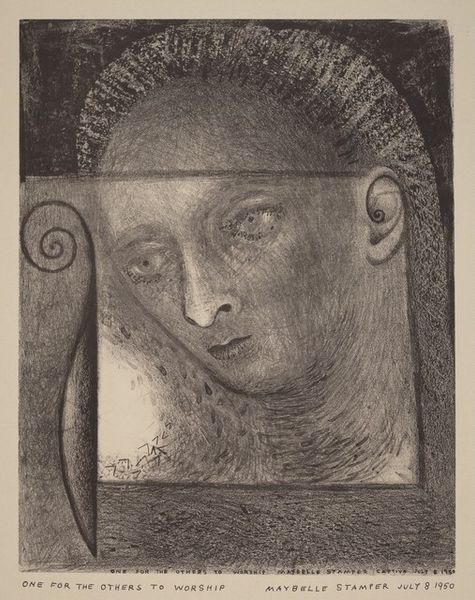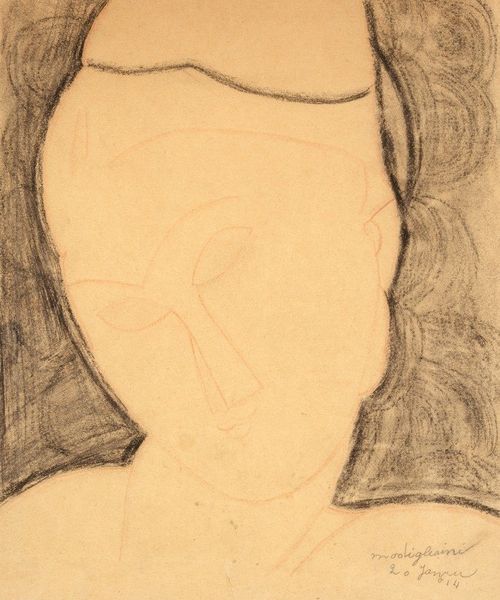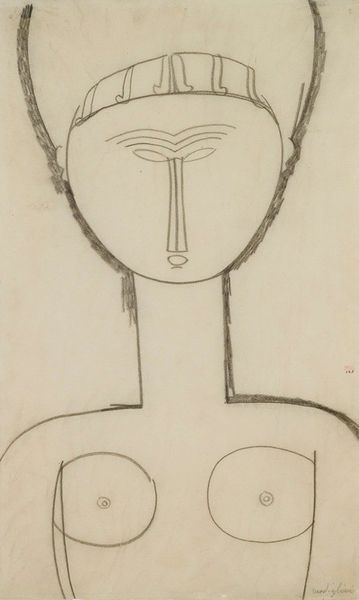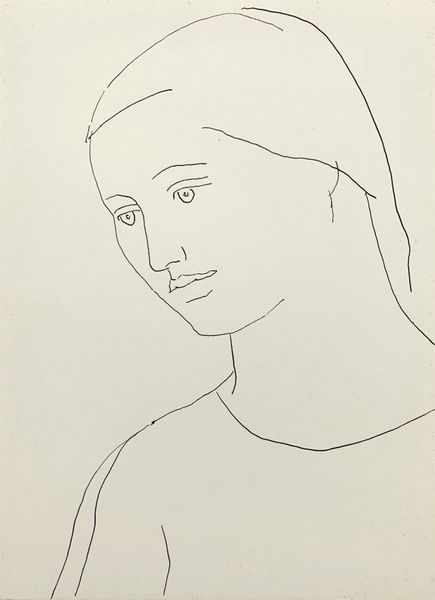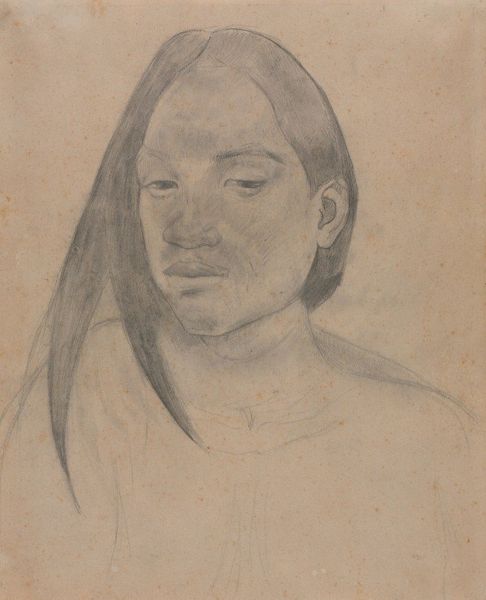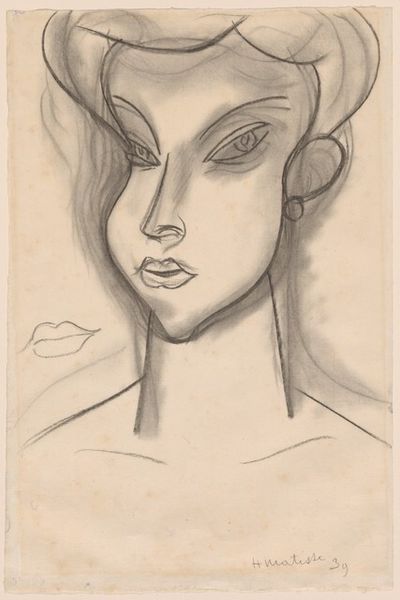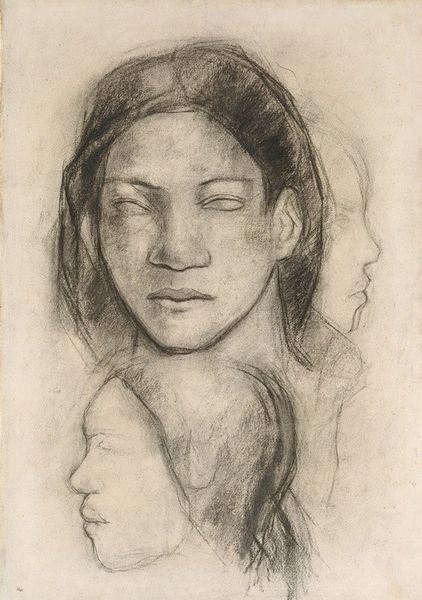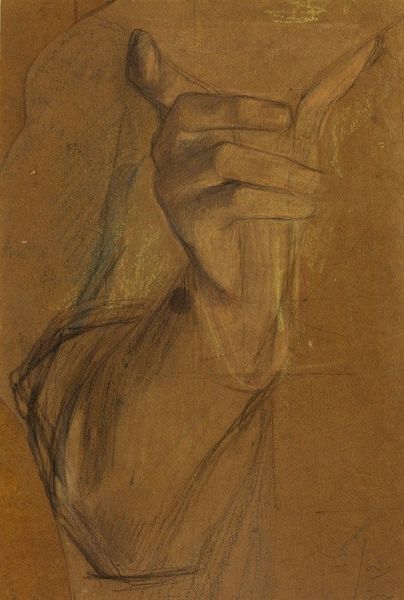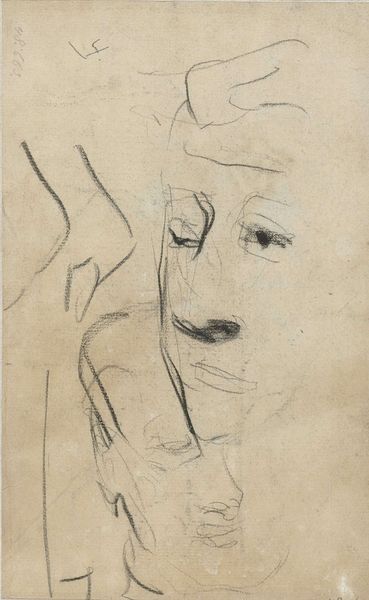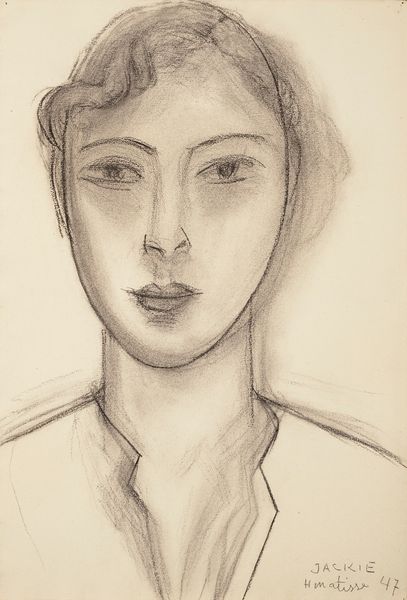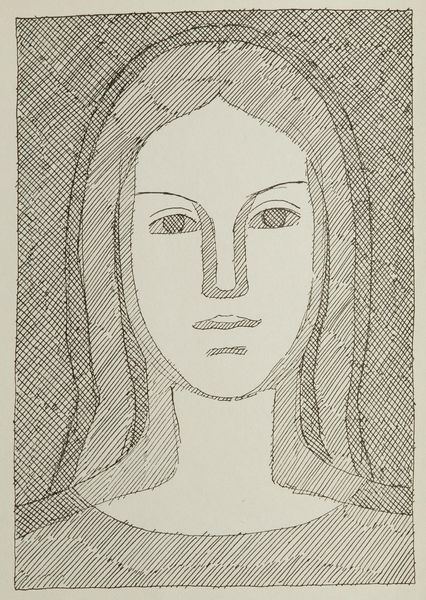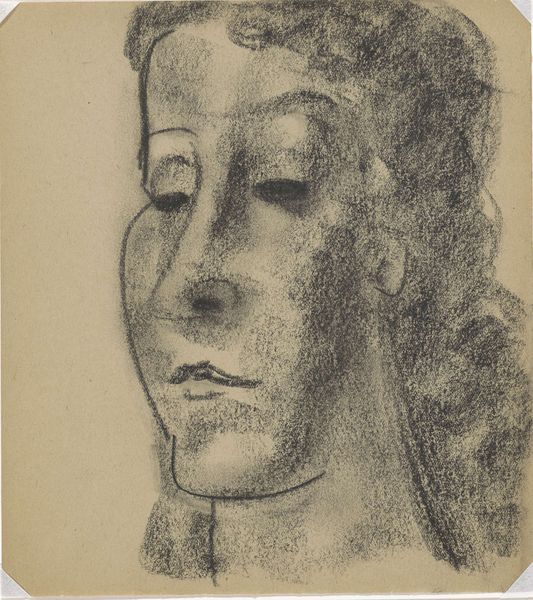
drawing, pencil, charcoal
#
portrait
#
drawing
#
charcoal drawing
#
pencil drawing
#
pencil
#
portrait drawing
#
charcoal
#
post-impressionism
Copyright: Public Domain: Artvee
Editor: We're looking at Paul Gauguin's "Tête d’une Femme Tahitienne," made around 1895-1903, using pencil and charcoal. There's a raw, almost haunting quality to this portrait. What's your read on it? Curator: Raw is a brilliant word. It feels like he’s captured something deeply personal, wouldn't you agree? Look at the heavy lines, the shading around the jaw and neck – it’s almost as if he's wrestling with the image. It goes beyond mere representation, venturing into the emotional territory. And the paper itself…doesn't it remind you of old parchment, holding secrets whispered across time? Editor: Absolutely! It's like the drawing *itself* is aging, gaining a history. How do you think his time in Tahiti influenced this stark style? Curator: Ah, Tahiti…for Gauguin, it was both escape and inspiration, a land promising authenticity, even if he was chasing a myth. I suspect the relative lack of traditional art supplies pushed him to embrace the immediacy of charcoal and pencil. The cross hatching adds such drama to her face. Also the contrast to the blank "gaze", she has no eyes...it could almost be a mask. What kind of statement do you think that is making? Editor: A mask…an absence, definitely powerful. Maybe a comment on identity, both hers and his, as an outsider looking in? Curator: Exactly! The more he tried to capture the ‘true’ Tahiti, the more his own interpretation shaped the image. So we're not just seeing her, but Gauguin's experience, his longing. Isn’t it fascinating how a simple sketch can hold so much complexity? Editor: Definitely! I'll never look at Gauguin's Tahitian portraits the same way again. Curator: Wonderful! That’s the magic of art, isn’t it? Shifting perspectives, challenging our assumptions and showing a glimpse into the human heart.
Comments
No comments
Be the first to comment and join the conversation on the ultimate creative platform.
